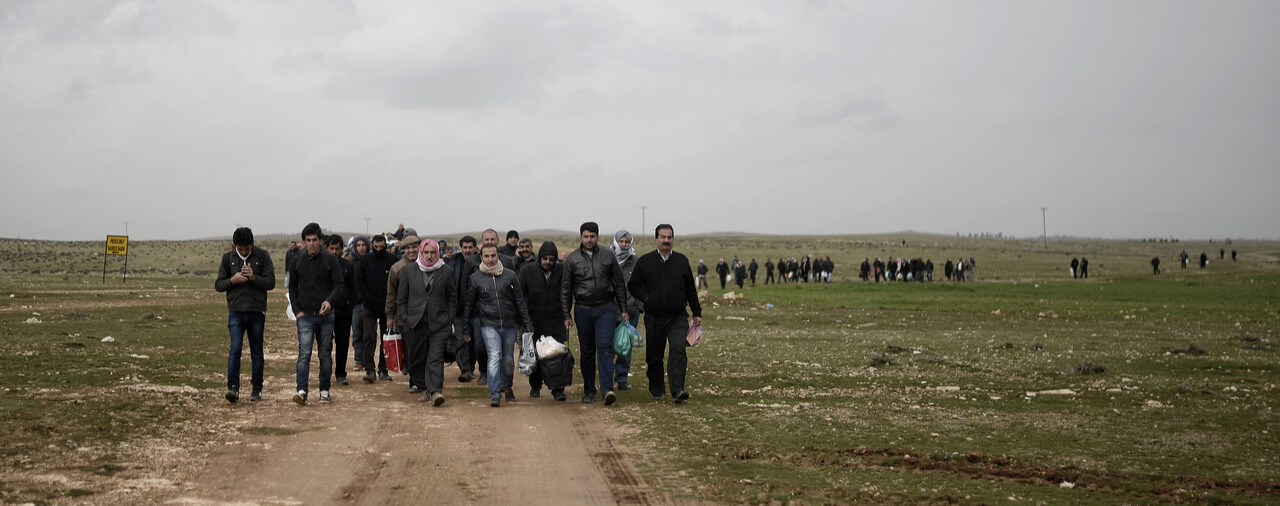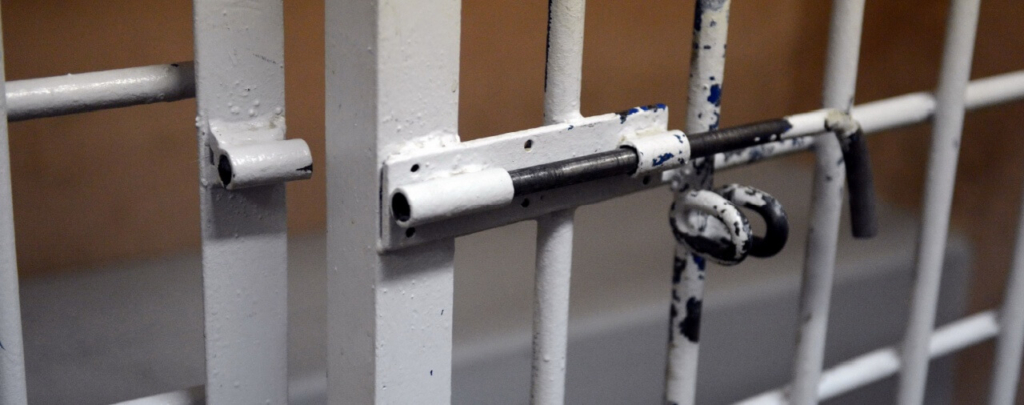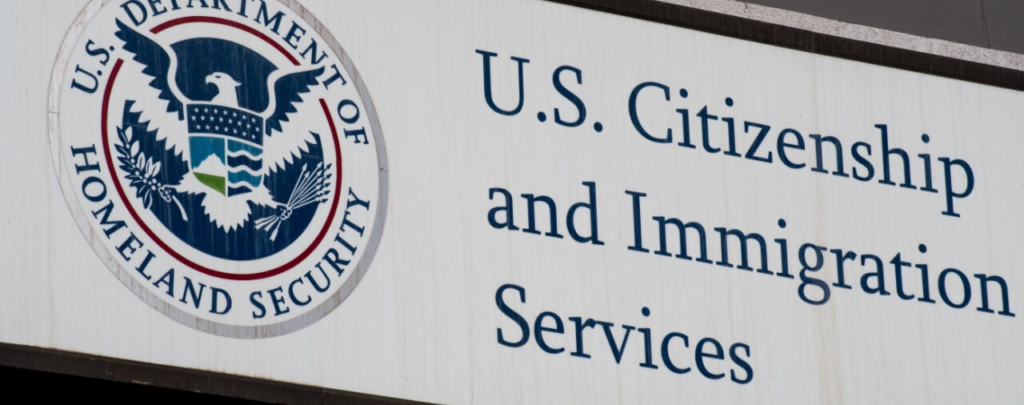Introduction
On March 6, 2017, President Donald Trump signed an Executive Order titled “Executive Order Protecting the Nation From Foreign Terrorist Entry Into The United States” (“Travel Order”) [PDF version]. This Executive Order revokes and replaces an Executive Order of the same name issued by President Trump on January 27, 2017 [PDF version].
In this post, I will examine President Trump’s justification for the new Travel Order as stated in the text of the Order itself and, more generally, the provisions in the Travel Order for subsequent changes to the vetting of visa applicants and the immigration system. To this effect, and with an eye towards the implementation of the Travel Order going forward, I will also examine a March 6 Memorandum issued by President Trump to the Secretary of State, the Attorney General, and the Secretary of Homeland Security titled “Implementing Immediate Heightened Screening and Vetting of Applications for Visas and Other Immigration Benefits, Ensuring Enforcement of All Laws for Entry into the United States, and Increasing Transparency among Departments and Agencies of the Federal Government and for the American People” (“The President’s Memo”) [link].
To learn more about the Travel Order as it affects individuals seeking immigration status in the United States, please see our articles about the suspension of entry from six countries [see article], the suspension of refugee travel and determinations [see article], and the suspension of the Immigrant Visa Waiver Program [see article]. Also see our article comparing the March 6 Travel Order to the January 27 Travel Order [see article]. Finally, please see our post containing a video of remarks by Secretary of State Rex Tillerson, Attorney General Jeff Sessions, and Secretary of Homeland Security John Kelly on the implementation of the new Travel Order.
Stated Reasons for the Travel Order’s Suspension of Entry and Refugee Travel Provisions
Many crucial provisions of the January 27 Travel Order were blocked by federal courts [see opinion blog]. One of the reasons cited to by the United States Court of Appeals for the Ninth Circuit was that the Trump Administration failed to provide sufficient justification for the suspension of entry of alien nationals of seven countries and the suspension of refugee admissions and final determinations.
In addition to narrowing the scope of the Travel Order in the new March 6 version, President Trump offers more detailed explanations for his exercise of executive authority.
Sections 1(d) and (e) serve to explain the 90-day suspension of entry of nationals of Iran, Libya, Somalia, Sudan, Syria, and Yemen in the new Travel Order. First, President Trump notes that all six of these countries are designated under section 217(a)(12) of the Immigration and Nationality Act (INA) as “countries of concern” for purpose of extra scrutiny under the Visa Waiver Program (VWP). The same justification was used to support the January 27 Executive Order [see blog]. In section 1(e)(i)-(vi), President Trump lists descriptions of each included country to support the suspension of entry under section 212(f) of the INA [see article].
Interestingly, President Trump exempts Iraq, which was included in the January 27 Executive Order and is now the only country designated under section 217(a)(12) that is not included in the new Travel Order. In section 212(g), President Trump explains the considerations that led to his change of heart since January 27 and his decision to not suspend the entry of nationals of Iraq. These reasons include strategic consideration stemming from the United States’ relationship with Iraq along with steps that have been taken by the Iraqi Government to “enhance travel documentation, information sharing, and the return of Iraqi nationals subject to final orders of removal.” While Iraqi nationals may be subject to enhanced vetting, they are not subject to a temporary bar on entry.
Furthermore, President Trump has ordered new comprehensive vetting procedures and a country-by-country review to ensure that the immigration system is equipped to properly screen persons seeking visas to entry the United States. Accordingly, in section 2(c), he justifies the imposition of a 90-day suspension of entry on six countries of concern as being a step to “temporarily reduce the investigative burdens on agencies during the review period.”
In section 1(h) of the Travel Order, President Trump cites recent examples of individuals who were admitted to the United States as refugees and who were then charged with terrorism-related offenses. Furthermore, he notes that the Attorney General has reported to him “that more than 300 persons who entered the United States as refugees are currently the subjects of counterterrorism investigations by the Federal Bureau of Investigation.” In section 6(a) of the Travel Order, President Trump explains his 120-day suspension of travel of refugees into the United States and the decisions on applications for refugee status as integral to his directive to the Secretary of State, Secretary of Homeland Security, and the Director of National Intelligence to review the refugee program and determine what additional procedures must be put in place to ensure that individuals admitted as refugees “do not pose a threat to the security and welfare of the United States.”
Country-by-Country Review
In section 2(a) of the Travel Order, President Trump directs the Secretary of Homeland Security, in consultation with the Secretary of State and the Director of National Intelligence, to “conduct a worldwide review,” country-by-country, to determine whether additional information is needed from individual countries, and if so, what types of information, to allow the adjudication of applications by nationals of that country in order to determine that they are not security or public safety threats. The President makes clear that the Secretary of Homeland Security may determine that certain information is needed from particular countries even if it is not needed from every country.
In section 2(b) of the Travel Order, the President instructs the three officials conducting the country-by-country review to submit a report on the results of the worldwide review within 20 days of the effective date of the Travel Order (March 16, 2017). The report will list the information required from each country and a list of countries that do not provide adequate information. Under section 2(d), the Secretary of State will be required to request additional required information from foreign governments that failed to supply required information within 50 days of notification. Under section 2(e), if any such countries continue to fail to provide adequate information within 50 days of notification, the Secretary of Homeland Security, in consultation with the Secretary of State and the Attorney General, will submit to the President a list of countries recommended for inclusion in a Presidential proclamation that would prohibit the entry of nationals from those countries in “appropriate categories” until the Secretary of Homeland Security “certifies that the country has an adequate plan” to provide to requisite information or that it has already begun providing such information. Furthermore, the three officials may submit to the President the names of additional countries to the President for the implementation of “other lawful restrictions or limitations deemed necessary for the security or welfare of the United States.” Section 2(f) gives the Secretary of Homeland Security, in consultation with the Secretary of State and the Attorney General, the discretion to submit to the President additional countries recommended for similar treatment, as well as any countries that they believe should be removed from the scope of a Presidential proclamation described in section 2(e).
Section 2(g) of the Travel Order directs the Secretary of State and the Secretary of Homeland Security to submit a joint report on the progress in implementing the Travel Order within 60 days of the effective date of the Travel Order, a second report within 90 days, a third report within 120 days, and a fourth report within 150 days.
In section 1 of the President’s Memo, he takes the position that the review “cannot delay the immediate implementation of additional heightened screening and vetting protocols and procedures for issuing visas to ensure that we strengthen the safety and security of our country.”
Enhanced Vetting
In section 5(a) of the Travel Order, President Trump instructs the Secretary of State, the Attorney General, the Secretary of Homeland Security, and the Director of National Intelligence to implement a program to identify individuals in the course of immigration adjudications who seek to “enter the United States on a fraudulent basis, who support terrorism, violent extremism, acts of violence toward any group or class of people within the United States, or who present a risk of causing harm subsequent to their entry, or who present a risk of causing harm subsequent to their entry.”
The program required by section 5(a) must include a “uniform baseline for screening and vetting standards and procedures.” The Travel Order lists factors that may be considered as part of these new standards and procedures (paraphrased):
In-person interview requirements;
A database of documents provided by applicants to ensure that multiple applicants are not using duplicate documents;
Amended application forms that include questions aimed at identifying fraudulent answers and malicious intent;
Mechanisms for ensuring that applicants are who they claim to be;
Mechanisms for assessing whether applicants may commit, aid, or support any kind of violent, criminal, or terrorist acts after entering the United States;
Any other appropriate means for ensuring the proper collection of data necessary for properly vetting applicants.
In section 5(b) of the Travel Order, the President directs the Secretary of State, in conjunction with the other three officials involved in creating the new vetting procedures, to submit to the President reports on the progress of the program within 60 days of the effective date of the Travel Order, within 100 days, and within 200 days.
Section 2 of the President’s Memo directs the Secretary of State, the Attorney General, and the Secretary of Homeland Security to implement procedures and protocols as soon as practicable to “enhance the screening and vetting of applications for visas and all other immigration benefits, so as to increase the safety and security of the American people.” President Trump instructs them to focus on (paraphrased):
a. Preventing the entry of foreign nationals who may aid, support, or commit violent, criminal, or terrorist acts;
b. Ensuring the proper collection of all necessary information to evaluate all grounds of inadmissibility, deportability, or grounds for the denial of other immigration benefits.
In section 3 of the President’s Memo, President Trump directs the Secretary of State, the Attorney General, the Secretary of Homeland Security, and the heads of all other relevant executive departments and agencies “to rigorously enforce all existing grounds of inadmissibility and to ensure subsequent compliance with related laws after admission.” To this effect, President Trump directs these departments and agencies to issue new rules, regulations, or guidance to enforce laws relating to inadmissibility and subsequent compliance. Finally, President Trump directs that, upon the Secretary of Homeland Security’s issuance of such new rules, the heads of all other relevant executive departments and agencies “shall, as necessary and appropriate, issue new rules that conform to them.”
Refugees
In section 6(a) of the Travel Order, President Trump directs the Secretary of State, in conjunction with the Secretary of Homeland Security and in consultation with the Director of National Intelligence, to review the United States Refugee Admissions Program (USRAP) application and adjudication process. The review will be to determine “what additional procedures should be used to ensure that individuals seeking admission as refugees do not pose a threat to the security and welfare of the United States.” Subsequent to such review, the Secretary of State will implement these new procedures. This review will be completed during the 120-day period subsequent to March 16, 2017, which is also the period for which refugee travel and determinations are in most cases suspended. After the 120-day period, the Secretary of Homeland Security “shall resume making decisions on applications for refugee status only for stateless persons and nationals of countries for which the Secretary of State, Secretary of Homeland Security, and the Director of National Intelligence have jointly determined that the additional procedures” implemented after the review “are adequate to ensure the security and welfare of the United States.”
In section 6(d) of the Travel Order, President Trump makes it the policy of the Executive Branch to provide State and local jurisdictions with a role in the process of determining the placement and settlement in their jurisdiction of aliens eligible to be admitted as refugees. The President directs that this should be done to the greatest extent permitted by law and as practicable. To this effect, the President directs the Secretary of State to review the issue and devise a proposal to promote the involvement of State and local jurisdictions.
Rescission of Executive Authority Related to Terrorism Grounds of Inadmissibility
In section 7 of the Travel Order, President Trump directs the Secretary of State and the Secretary of Homeland Security to consider rescinding exceptions permitted to terrorism-related grounds of inadmissibility under section 212(d)(3)(B) of the INA.
Biometric Entry-Exit
In section 8(a) of the Travel Order, President Trump directs the Secretary of Homeland Security to expedite the completion and implementation of a biometric entry-exit tracking system for travelers to the United States. In section 8(b), the President directs the Secretary of Homeland Security to submit reports on the progress of the biometric entry-exit system within 100 days of the effective date of the Travel Order, within 200 days, and within 365 days. After the first three reports, the Secretary of Homeland Security will submit further reports every 180 days until the biometric entry-exit system is fully deployed and operational.
Reciprocity
In section 10 of the Travel Order, the President directs the Secretary of State to review all nonimmigrant visa reciprocity agreements to ensure that they are truly reciprocal. If any agreements are found to not be reciprocal with respect to a specific country and visa category, the Secretary of State is directed to adjust the visa validity period, fee schedule, and other treatment to match the treatment of U.S. nationals by that country.
Data Collection
In section 12 of the Travel Order, the President directs the Secretary of Homeland Security, in consultation with the Attorney General, to make publicly available the following information to the American people as consistent with applicable law and national security (paraphrased):
Information regarding the number of foreign nationals in the United States who have been charged or convicted of terrorism-related offenses while in the United States or who have been removed for reasons having to do with terrorism or national security;
Information regarding the number of foreign nationals in the United States who were radicalized subsequent to entry and who then engaged in terrorism-related activities (including material support to terrorism-related organizations in countries that pose a threat to the United States);
Information regarding the number and types of gender-based violence against women (including “honor killings”) in the United States committed by foreign nationals; and
Any other information relevant to public safety and security as determined by the Secretary of Homeland Security and the Attorney General.
In section 12 of the Travel Order, the President directs the Secretary of Homeland Security to issue an initial report within 180 days of the effective date of the order. The initial report will include information dating back to September 11, 2001. The Secretary of Homeland Security shall issue subsequent reports every 180 days thereafter.
Section 4 of the President’s Memo contains further instructions with regard to data collection and reporting.
In section 4(a) of the President’s Memo, President Trump directs the Secretary of State and the Secretary of Homeland Security to issue regular reports — written for public use and understanding -regarding visas and adjustment of status. Beginning on April 28, 2017, and by the last day of the month every month thereafter, the Secretary of State must issue reports containing the following information:
The number of visas that have been issued from each consular office within each country during the reporting period (specifying visa category and country of issuance); and
Any other information that the Secretary of State considers appropriate.
Additionally, President Trump directs the Secretary of Homeland Security to issue reports on adjustment of status every 90 days (with the first to be issued within 90 days of the effective date of the President’s Memo). The reports should specify the type of adjustment of status, detailed class of admission, and country of nationality.
In section 4(b) of the President’s Memo, President Trump directs the Secretary of State, in consultation with the Secretary of Health and Human Services, the Secretary of Homeland Security, and the Director of Office of Management and Budget to, within 180 days of the President’s March 6, 2017 Memo submit a report “detailing the estimated long-term costs of the [USRAP] at Federal, State, and local levels…” This report, submitted to the President, will include recommendations on curtailing the described costs.
In section 4(c) of the President’s Memo, President Trump directs the Secretary of State, in consultation with the Director of the Office of Management and Budget, to submit to him within 180 days of the date of the President’s Memo, “a report estimating how many refugees are being supported in countries of first asylum (near their home countries) for the same long-term cost as supporting refugees in the United States…”
Severability
Finally, in section 15(a) of the Travel Order, President Trump states that if any provision of the Travel Order or any specific application of it is held to be invalid, the unaffected portions of the Travel Order and the application of such provisions to other cases will not be affected. In section 15(b), the President states that if any provision or application of the Travel Order is held to be invalid due to the lack of certain procedural requirements, the relevant executive branch officials shall implement the requisite procedural requirements.
Conclusion
Although most of the immediate focus on the Travel Order relates to its provisions regarding the nationals of six countries and refugees, its more significant effects may be seen after the suspension periods expire. The Travel Order provides for the development of new vetting procedures, the creation of a biometric entry-exit system, and improved data reporting to the public. Please continue to follow our website for information relating to these and other immigration issues in the early months of the Trump Administration.





